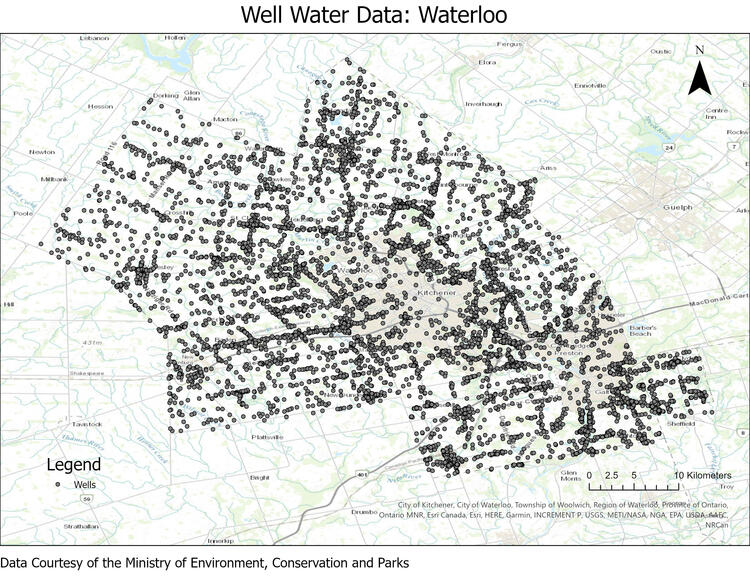Contact the Geospatial Centre
Dana Porter Library, Room 328
University of Waterloo Library
Waterloo, Ontario N2L 3G1
Email: librarygeo@uwaterloo.ca
This data resource provides well water log information for the Municipality of Waterloo, Wellington, and Brant County. This data was received in ASCII text format, from the Ontario Ministry of the Environment in November 2003. Wellington County data was received in May 2004. More recent data is available from: https://data.ontario.ca/dataset/well-records
The data includes the following well information:
This data is available in Universal Transverse Mercator (UTM) co-ordinates; horizontal datum is North American Datum (NAD) 83. The data is provided as an ascii data file (i.e. text file) and can be imported into a text or database program of your choice. Geographic Information System (GIS) software can be used to view the well water point layers.
To request this data, please fill out the Ask-Us form and include which layers (shapefiles) you are interested in obtaining. The dataset will be shared with you via OneDrive upon completion of the data release agreement form. You may also make an in-person appointment using the same form.
This material is provided for academic, research, teaching, and personal use only. A data release agreement must be agreed to before the data is delivered.
Regional Municipality of Waterloo Well Water Data[computer file]. Ottawa, Ontario: Ministry of the Enviornment, [2003].
Brant County Well Water Data[computer file]. Ottawa, Ontario: Ministry of the Enviornment, [2003].
Wellington County Well Water Data[computer file]. Ottawa, Ontario: Ministry of the Enviornment, [2003].

Dana Porter Library, Room 328
University of Waterloo Library
Waterloo, Ontario N2L 3G1
Email: librarygeo@uwaterloo.ca
The University of Waterloo acknowledges that much of our work takes place on the traditional territory of the Neutral, Anishinaabeg, and Haudenosaunee peoples. Our main campus is situated on the Haldimand Tract, the land granted to the Six Nations that includes six miles on each side of the Grand River. Our active work toward reconciliation takes place across our campuses through research, learning, teaching, and community building, and is co-ordinated within the Office of Indigenous Relations.